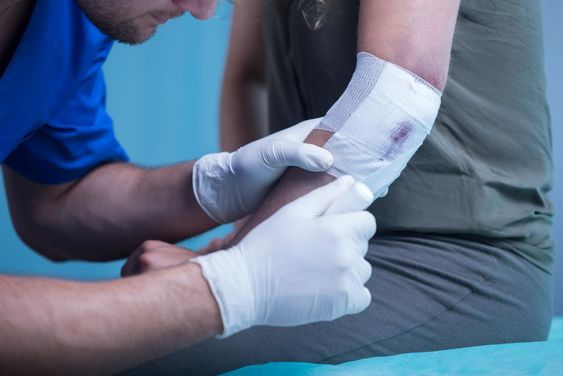Observing the healing status of a wound is a skill that every wound holder should master. Whether it's a small, everyday scratch or a deeper wound, they all go through specific stages of healing. Understanding these stages can help us determine the condition of the wound and take appropriate care.
Five stages of wound healing:
1. Wound hemostasis is the first stage. When we are injured, blood quickly pools at the wound to form a clot, which is a critical step in stopping bleeding. If the wound continues to bleed for longer than a certain period of time, this may indicate a more serious health problem and professional medical advice should be sought.
2. In the inflammatory stage, swelling, redness, and pain may appear around the wound. This is because the immune system kicks into action, delivering white blood cells and other necessary nutrients to the wound site to remove bacteria and foreign matter from the wound. At this time, the wound may also ooze clear fluid, which is a sign that the wound is cleaning itself.
3. Proliferation stage, this is the moment when the wound really begins to heal, and new tissue begins to form and gradually cover the wound. This process may take some time, depending on the depth and size of the wound. At this stage, we should keep the wound clean and avoid putting too much pressure on it to prevent damage to the newly formed tissue.
4. Maturation stage, in when new tissue has completely covered the wound and is starting to become stronger and more durable. At the same time, the skin around the wound will gradually return to its original color and texture. At this point, we can say that the wound has basically healed, but we still need to pay attention to protecting the newly formed tissue to avoid further injury.
5. The last stage of scar formation. Each scar records a past story. Even a small wound may leave permanent marks on the skin. At this stage, you may feel a little itchy in the wound, which is a sign of new life about to begin. However, you must avoid scratching the scar, as this will only re-injure the wound and even create scars that are more difficult to heal. To avoid scar formation, it is recommended to use silicone gel scar dressing. The silicone component inhibits the proliferation of fibroblasts and capillaries, thereby preventing the fading of scar color.
Wound healing is a complex and orderly process. By observing the different stages and changes in a wound, we can determine whether the wound is healing and whether further care is needed. Remember, keeping the wound clean and hygienic is key to healing, as well as being patient as new tissue forms and matures.
For minor wounds, this process can take up to three weeks, while for those larger ones, it will take longer to slowly repair. During this period, your wounds need moisture and care, just like delicate flowers need moisture from rain and dew. This is because only in a moist environment can your skin tissue regenerate and migrate better, avoiding the formation of hard scabs.
However, during the wound-healing process, we also need to be alert for signs of infection. Redness, increased pain, oozing of pus, warmth, delayed healing, and swelling around the wound may all be signs of infection. Although some of these symptoms may also be signs that a wound is healing, we still need to distinguish the difference between a healing wound and an infected wound, as it is crucial to detect and treat infections early.
For more information on Innomed® Silicone Scar Dressing, Refer to the Previous Articles. If you have customized needs, you are welcome to contact us; You Wholeheartedly. At longterm medical, we transform this data by Innovating and Developing Products that Make Life Life easier for those who need loving care.
Editor: kiki Jia
Date: February 22, 2023

 English
English عربى
عربى Español
Español русский
русский 中文简体
中文简体








